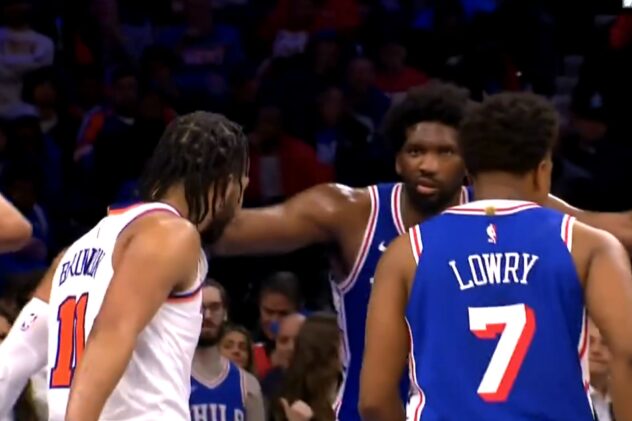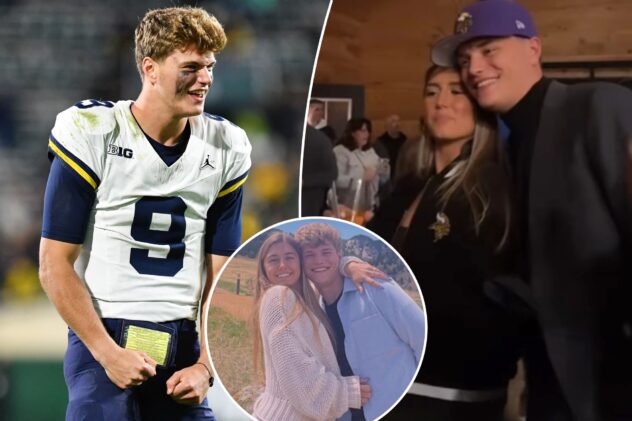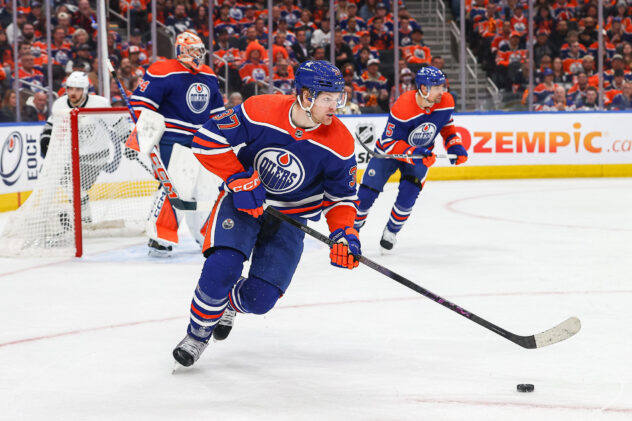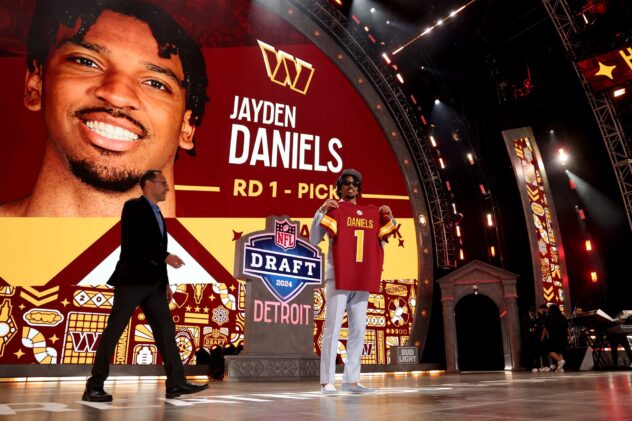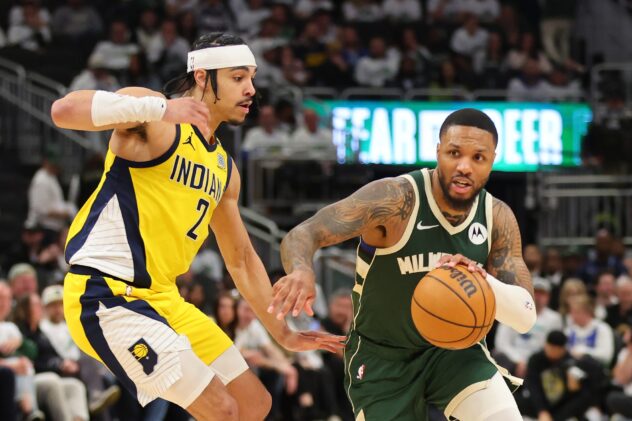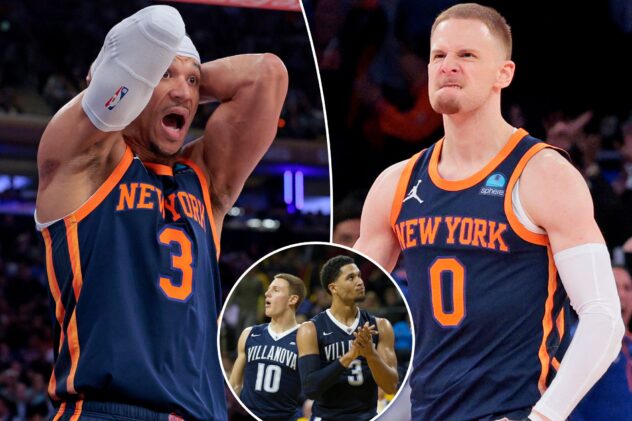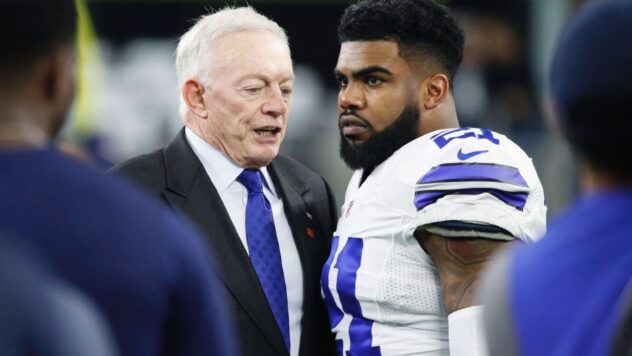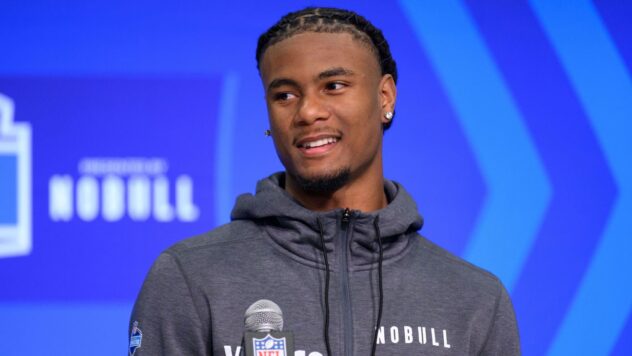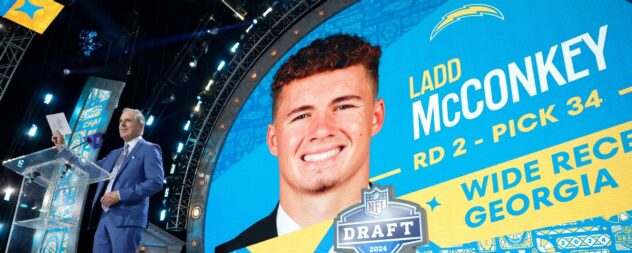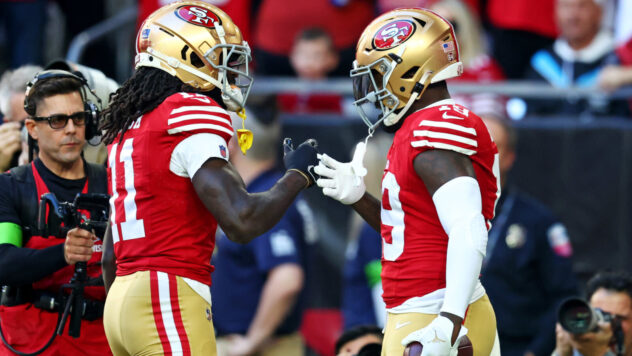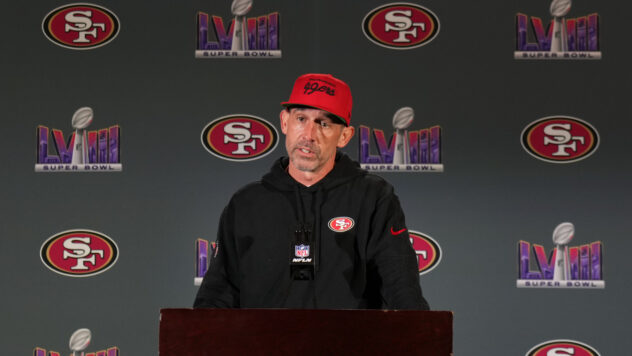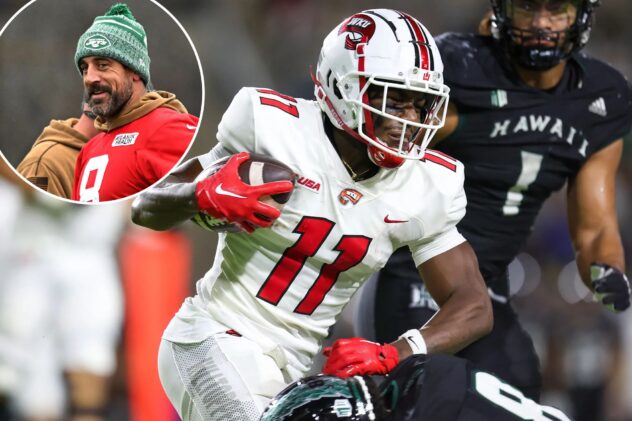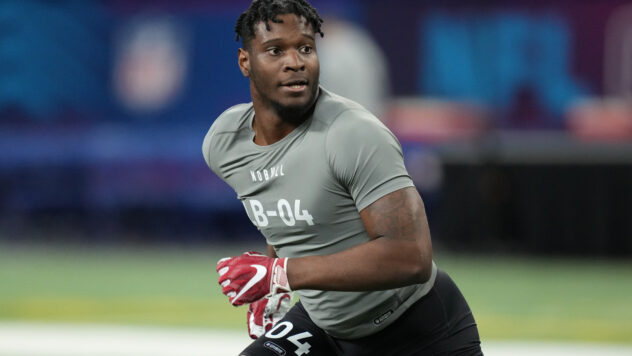Breaking News: Love May Not Actually Be Blind
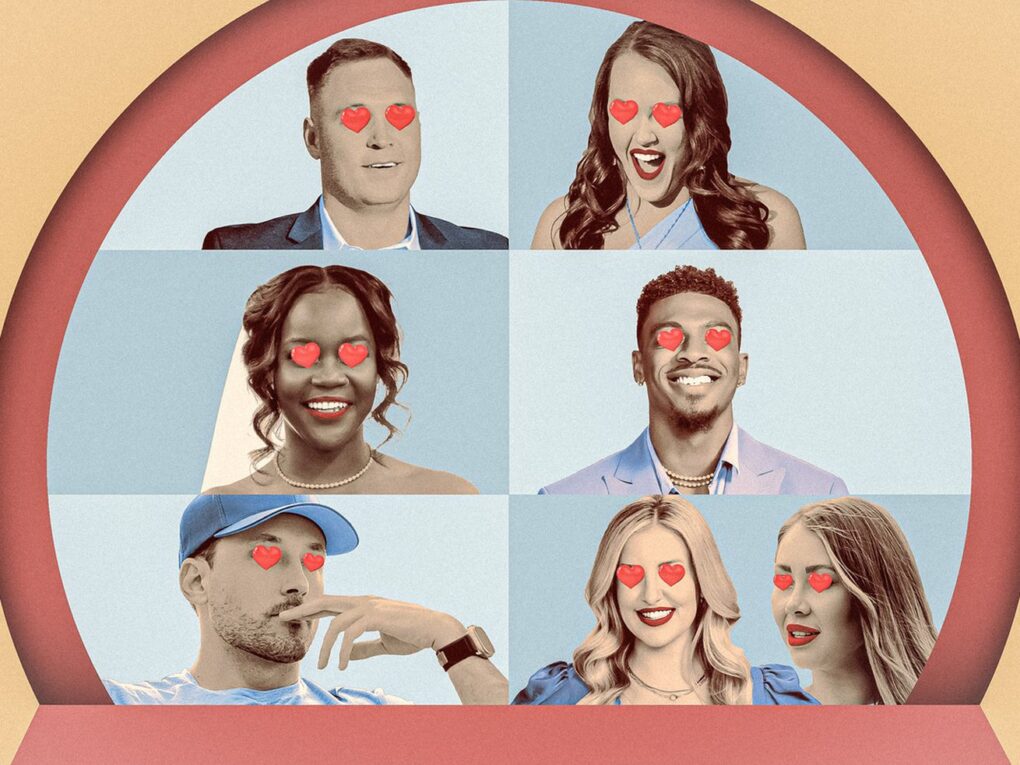
The immutable truth of Netflix’s ‘Love Is Blind’ is that it is at its best and most entertaining when it is directly refuting its own hypothesis
In the Season 6 finale of Love Is Blind, a conventionally attractive man greets his equally attractive fiancée at the altar with the words “OK, body.” He expands on those feelings moments later with another powerful declaration: “You got that shit on.” (If it’s not already clear, he is about to ruin her life.) After a wedding officiant prompts the pair to “now prove if love is blind” by making marriage vows, the woman responds with the classic “I do” to the man that she first fell in love with despite not being able to physically see what he looked like. And in return, that man—looking her dead in the eyes—says that he cannot commit to marrying her: “But I want you to know I’m rockin’ with you.”
And with that, I think it’s time we call it: Love is not blind. Or if it is, the Netflix series Love Is Blind is not proving it to be so.
Additionally, love is not self-aware, it is not reliable, it cannot get with your friends; love is not forthcoming about its credit score, or the fact that it has roommates; it is not in therapy despite talking about definitely wanting to get into therapy; love is not mature, it is not honest, it cannot look up from its phone for a serious conversation; love is not ready to be a stepparent, even though it’s not going to come out and say that. Love is, very much, a product of generational trauma. Love will get dirty martini drunk and say the most outlandish shit you’ve ever heard in your life. Love is maybe, in the end, just here for the Jet Skis.
Or at least, that’s the vision of love we’re most often served on Love Is Blind, a show that makes heterosexual love look so truly unappealing that divorce lawyers should have to give it 10 percent.
After Season 5 of Love Is Blind: Oops All Monsters, it seemed like the surprise reality hit franchise might have reached its breaking point. There were no lasting relationships, everyone was so nasty to each other, and it felt like an unfortunate indictment of the modern dating scene rather than an experimental twist on it. But Season 6 cultivated a renewed energy for the show. From a contestant who compared herself to one of the hottest celebrities in the world in the pods, to a contestant who can’t get off his phone once out of the pods, to a contestant who almost definitely tried to get away with cheating on his fiancée but got exposed by his Apple Watch—this season ruled. But Season 6 probably also put the final nail in the coffin of Love Is Blind’s general concept thanks to a record-breaking level of chaos (the record broken is for the amount of times I bugged my eyes out so hard that I thought they may no longer be rockin’ with me).
The concept of throwing a bunch of desperate singles into “pods” and speedrunning them through relationships with people they’ve never met face-to-face is so perfect and chaotically specific for a reality TV show; it is no wonder that Love Is Blind is one of Netflix’s top-streamed shows. As an experiment, though, it is flawed.
Now, I’ve always appreciated Netflix’s dystopian approach to reality TV, which can basically be boiled down to “Stanford Prison Experiment, but make it sexy.” And you have to hand it to the streaming platform for riffing on the classics by randomly deciding to turn the United States’ entire supply of single tech sales executives into literal pod people all in the name of love. As a longtime warrior in the Bachelor franchise trenches, I’m tickled by the way shows like Love Is Blind and The Ultimatum still center their franchises on our society’s most deeply ingrained social construct—traditional heteronormative marriage—while also defiling its sanctity at every turn. “Yes, you have to get married at the end of this, but first, you have to get engaged to someone you’ve never physically met”; “Yes, you should marry your longtime partner, but first—live with this stranger you’re attracted to AND LET’S JUST SEE WHAT HAPPENS. Also, if you want to break up, you have to do it at a wedding altar in front of all your friends and family.”
But even though I enjoy Netflix’s strange determination to test the limits of our society’s theoretical desire for monogamy, it’s impossible to deny that Love Is Blind hasn’t exactly put together an airtight social experiment, which hilariously manages to undermine its own hypothesis—that pure love can ultimately outmatch physical attraction—at every turn, even while churning out a few successful relationships. First of all, this “experiment” is hosted by Nick and Vanessa Lachey, of the 98 Degrees Lacheys; somehow, they are our guides through the scientific method of determining how much physical attraction matters in a monogamous relationship, despite the fact that I would not trust those two with a Bunsen burner for longer than the 10 seconds it would take them to somehow light the entire cast of The Circle on fire …
Second of all, the actual generators of this experiment (Netflix—not the Lacheys, who are surely plugged into a cryogenic chamber somewhere whenever they’re not on-screen) are cowards. Over six seasons, we have not seen one unconventionally attractive person compete on this show. Sure, they’ve dabbled in having female contestants who are maybe a size 14/16—you know, the average size of an American woman—and sure, once in a while they’ll throw one 5-foot-5 guy into the mix. But these are generally attractive people. Every person competing on Love Is Blind basically looks like if you drew a Bachelor contestant from memory, which is to say, they’re solid nines in Charlotte, North Carolina. Two people who fell in love in the pods are probably not going to be too disappointed when they finally meet each other. Ergo (since we are all scientists now), the majority of the couples’ inability to remain attracted to each other once they do physically meet basically disproves the thesis of the show over and over again each season. Because the show isn’t really willing to test the limits of attraction.
Unfortunately for science, the most entertaining parts of Love Is Blind are when it directly disproves its own hypothesis.
Even if you’d never watched the show before, you probably started to hear about Megan Fox a few weeks ago. That hubbub came about because one Season 6 contestant, Chelsea, a flight attendant, told another Season 6 contestant, Jimmy, that she is sometimes told by her passengers that she looks like “MGK’s—I don’t know if she’s MGK’s wife or his girlfriend.” She was talking about Megan Fox. And her faux commitment to knowing who Machine Gun Kelly is but barely knowing who Megan Fox is is why this show should run for 20 seasons and win multiple Pulitzers. Chelsea went on to say that she “doesn’t see” the Megan Fox comparison, and that she gets it only because she has dark hair and light eyes, but the damage was done. And Chelsea knew what she was doing. She knew that Jimmy was dating another woman, Jess, and knew that if she could just get a leg up on Jess in the one category that they are supposed to be eliminating from the equation by quasi-name-dropping one of the 21st century’s most prominent sex symbols, she could win his affections permanently …
She was rigging the experiment. And we were letting her! Because, for us, it set up something even better than science: entertainment. For the next several episodes, we got the thrill of anticipation as the moment approached when Jimmy would actually meet Chelsea (who does, for the record, resemble Megan Fox enough to warrant a comment or two from someone who’s 30,000 feet in the air and two chardonnays deep) after he did, in fact, propose to her (go figure). And even more diabolical, we got the thrill of the anticipation of the moment when Jimmy would meet Jess, who actually does resemble Megan Fox (or more accurately, a Kardashian), and whose mere existence in the real world basically depleted Chelsea’s ability to maintain coherence (enter: the aforementioned dirty martini drunk).
In the series premiere of Love Is Blind, Dr. Vanessa Lachey says that Netflix is conducting this grand experiment because “Your value is often judged solely by the photo on your dating app—but everyone wants to be loved for who they are, not for their looks, their race, their background, or their income.” But those things … are a part of who we are. What we don’t want is to live in a world that unfairly under- or overvalues those parts of us. And Love Is Blind doesn’t eliminate that from dating by putting up a little wall between its singles. In the end, it exacerbates those things. A personality can be faked in the pods just as much as a visage can be faked on an app (or in the pods, as it turns out!). All of these contestants are living the Manic Pixie Dream Girl versions of themselves in those pods, where all there is to do is chitchat, eat sushi, and trauma dump over golden glasses of tequila. But the experiment can’t eliminate sight forever, and once the couples meet each other, they also meet each other’s real, non-pod selves, which include all the other factors that compound attraction: emotional IQ, financial literacy, stability, relationship boundaries, the ability to not cheat on your brand-new fiancée the moment you’re given the chance.
The greatest plight of daters today isn’t that you’re exorbitantly judged on your looks; it’s that dating via apps creates the illusion that there is a never-ending sea of opportunity—that there could always be something better out there. It eschews commitment for theoretical opportunity. And if someone has that mentality in the real world, they’ll likely have it in the pod world as well. Which leads us to Love Is Blind’s final and most fatal flaw in what Dr. Nick Lachey once called “literally the first experiment like this.” Which is that an actual experiment needs a control group. To really prove that “love is blind,” the show would need to compare the blind results to people dating in a similar fashion who are able to physically see one another. And my guess is that, even if you eliminated the temporary blindness of the experiment, its general construct would result in just as many marriages and breakups. Because, in comparison to other reality TV dating shows, Love Is Blind’s infrastructure actually contains a few other interesting guide rails beyond the novelty that the contestants can’t see each other. Mainly, that the contestants all live in the same city, which means that they can more easily and quickly integrate into one another’s real lives when they return from the initial experiment phase. The fairy tale bubble of the pods—where there are no logistics, or bills to fumble over, or meddling friends or exes—is popped early and often for these Love Is Blind contestants. Taking their connections into the real world most certainly compromises the “analyzing data” portion of Love Is Blind’s scientific method—but it also sets the series apart from more “romantic” institutions like The Bachelor that stay forever in the fairy-tale world of roses and international travel. It is probably for that reason that across six seasons, Love Is Blind has sustained twice as many marriages as in The Bachelor’s 28 seasons.
And perhaps this grand experiment has been worth it to see the joyous and lasting union of Season 1’s original success story, Lauren and Cameron. But for every Lauren and Cameron, there are six other failed mutant experimental couples. So what exactly are we proving here? I’m no scientist, but I can quickly do the simple math on Season 6 for you: Five couples left the pods “in love” and engaged, three couples planned weddings, two couples made it to the altar, and one couple got married. Did Johnny and Amy prove that love is blind by virtue of crossing paths on reality TV when they may or may not have on the Charlotte dating scene? They did not. Because the real failure in this experiment lies in its flawed hypothesis: The final thing the Good Doctors Lachey say in that series premiere intro, before they begin unleashing holy hell on major metropolitan cities across the U.S., is “Will you say ‘I do’ to the person you’ve chosen here sight unseen, or will physical realities in the real world sabotage you, and will you walk away from them forever?”
The show itself acknowledges that the physical realities of the real world go far beyond eyes and butts and celebrity doppelgängers. And there is no world in which the show can eliminate those realities completely—the show does not, in fact, really try. The most interesting episode of every season is when the couples finally see one another’s real homes, and we see where physical attraction really lives and dies: within the quality of one’s shower grout maintenance.
But the “Is love really blind?” experiment truly falls apart when the show reverts to the classic rom-competition insistence of equating love with an immediate commitment to marriage. Because you may well be able to be temporarily blinded in love, but commitment cannot—and should not—be blind. Just ask AD, our bride-not-to-be from the first paragraph whose fiancé, Clay, thought she should still rock with him after he let her say “I do” and then told her “I don’t” in front of all of her friends and family—even though she was wearing a wedding dress slit that went all the way up to her hip bone and had just delivered vows that included the proclamation “Period!”
AD is perhaps the strongest example we have ever seen of loving blindly on this show. She took the high of falling in love with someone she couldn’t see and decided she would chase that high until she didn’t see—or hear!—anything ever again. She listened to this man say over and over that he thought cheating was hereditary and knew he would end up cheating on her, and said: That sign can’t stop me, because it’s 6-foot-3, and I CAN’T READ! She watched this man stress-bus his own table in Mexico at the mere thought of committing to her and said, I pretend I do not see it. She saw all of the signs that he wasn’t ready for marriage—all of the signs that he never should have come on the show and wasted her time—and she closed her eyes to them anyway. Maybe because she really loved him … maybe because of something else. But in the end, she entered into the experiment as wholly as anyone ever has—and it failed her.
The experiment is over. Love is not blind. But it is—for better or for worse, for richer or for poorer, in sickness and in health—entertaining as hell. And so, I will keep rockin’ with Love Is Blind. Because, as always, the real love—the truest, blindest love, and with apologies to AD—was the chaos we watched along the way.

